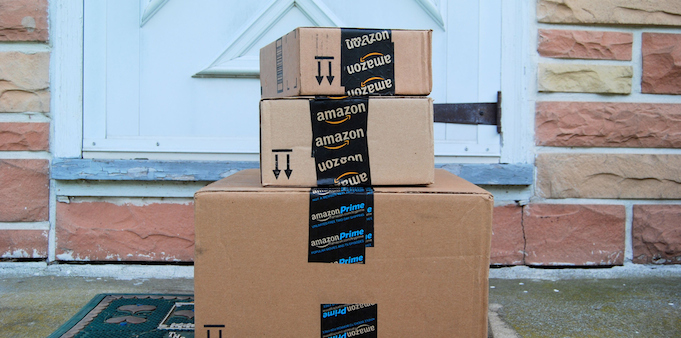
Australian businesses struggle to get a look-in on arguably the world’s biggest e-commerce platform, Amazon.
But if you can get your products onto Amazon, and you know a little bit about how Amazon’s search algorithm hangs together, your online sales will skyrocket. Some of the people I’ve been speaking to confirm that the volumes of what they used to sell each day are being exceeded each and every hour on Amazon.
As an Australian business, getting an Amazon Seller Account will require some hoop jumping. As Amazon states here you need to have and supply just some of the following information:
- To be paid, you need to provide a bank account in a country supported by Amazon. Currently, we support bank accounts in the United States, the United Kingdom, and in the eurozone, which includes Austria, Belgium, Cyprus, Estonia, Finland, France, Germany, Greece, Ireland, Italy, Luxembourg, Malta, the Netherlands, Portugal, Slovakia, Slovenia, and Spain.
- You must accurately state the ‘shipping from’ country in your Amazon.com seller profile for display to customers.
- You will be responsible for assuring that you will meet the shipping expectations for all orders you receive.
- Products must be listed in US dollars.
- All customer-facing content and communications must be in US English.
- You should understand the laws that apply to you as a seller on the website and only list, sell, and export products that comply with those laws.
I’d also strongly recommend that you use FBA (or Fulfilment By Amazon) – where you ship pallets of products to Amazon warehouses in the US and they fulfil each order directly on your behalf. If you can get that set up, then all you have to do is act as a middle man between your suppliers and Amazon customers.
Sounds like a dream …
Note that products valued between $7 and $40 sell the best on Amazon.
Now, onto the marketing bit.
Marketing on Amazon
Most people search for products on Amazon using the search bar. Very few people browse categories to buy stuff. There are essentially three aspects to the Amazon ranking algorithm which determine a strong rank for your product listing when someone conducts a search.
First of all, you need to understand that Amazon will reward high converting product pages with a higher rank simply because that’s how Amazon makes their money. If you sell, they get paid so Amazon’s ranking algorithm will rank high performing product pages higher.
So the usual rules apply, great product photography helps, use long and super descriptive benefit-driven sales copy and an SEO’d product heading (incorporating the search term you want your product to rank for). It’s amazing what a bad job most sellers do with their product page optimisation.
The next factor is reviews. This is important. Social proof and positive reviews are essential. But you need to plan before you list each product. On an Amazon product page there are three reviews which nearly are always static; typically the first three that the product receives. Additional reviews are pushed to the side bar.
Make sure the first three reviews the product gets are good ones! Get you mum, your dad and your best friend to buy the product and review it – glowingly! These reviews are much more visible to buyers and tend to stick.
Which leads me to the third factor. Get people (your friends and family) to type in your desired search term, find your product and buy it, (then review it). You can refund them later!
Amazon will rank a product higher when people actively search, find and buy your product and you’ll see the rankings climb after about three days.
Lastly, once you’ve got some traction and sales coming through, do what hardly anyone else does, send an email to your customers thanking them for their purchase and asking for a review. Depending on what you’re selling this should be done about a week after they’ve received the product. More reviews also tend to help rankings.
It’s estimated that 1% of products sold on Amazon are reviewed, so if you want to roughly calculate how many units of a product are being sold, take the amount of reviews it has, times it by 100 and divide by the length of time (in months) the product has been up on Amazon. It’ll give an idea of how many units are being sold and how much revenue is being generated each month.
The Lowepro messenger bag has been reviewed 97 times since March 2011. At a review rate of 1%, that’s approximately 9,700 sales of a $30 product since March 2011 = $290,000 in revenue, or $12,125 per month.
That’s just one product competing with hundreds of others in one category.
The rewards are huge if you can get on board, so do the sums and see if it makes sense to get set up on Amazon.
Chris Thomas heads up Reseo, a search engine optimisation company which specialises in creating and maintaining Google AdWords campaigns and Search Engine Optimisation campaigns for a range of corporate clients.
Never miss a story: sign up to SmartCompany’s free daily newsletter and find our best stories on Twitter, Facebook, LinkedIn and Instagram.


COMMENTS
SmartCompany is committed to hosting lively discussions. Help us keep the conversation useful, interesting and welcoming. We aim to publish comments quickly in the interest of promoting robust conversation, but we’re a small team and we deploy filters to protect against legal risk. Occasionally your comment may be held up while it is being reviewed, but we’re working as fast as we can to keep the conversation rolling.
The SmartCompany comment section is members-only content. Please subscribe to leave a comment.
The SmartCompany comment section is members-only content. Please login to leave a comment.